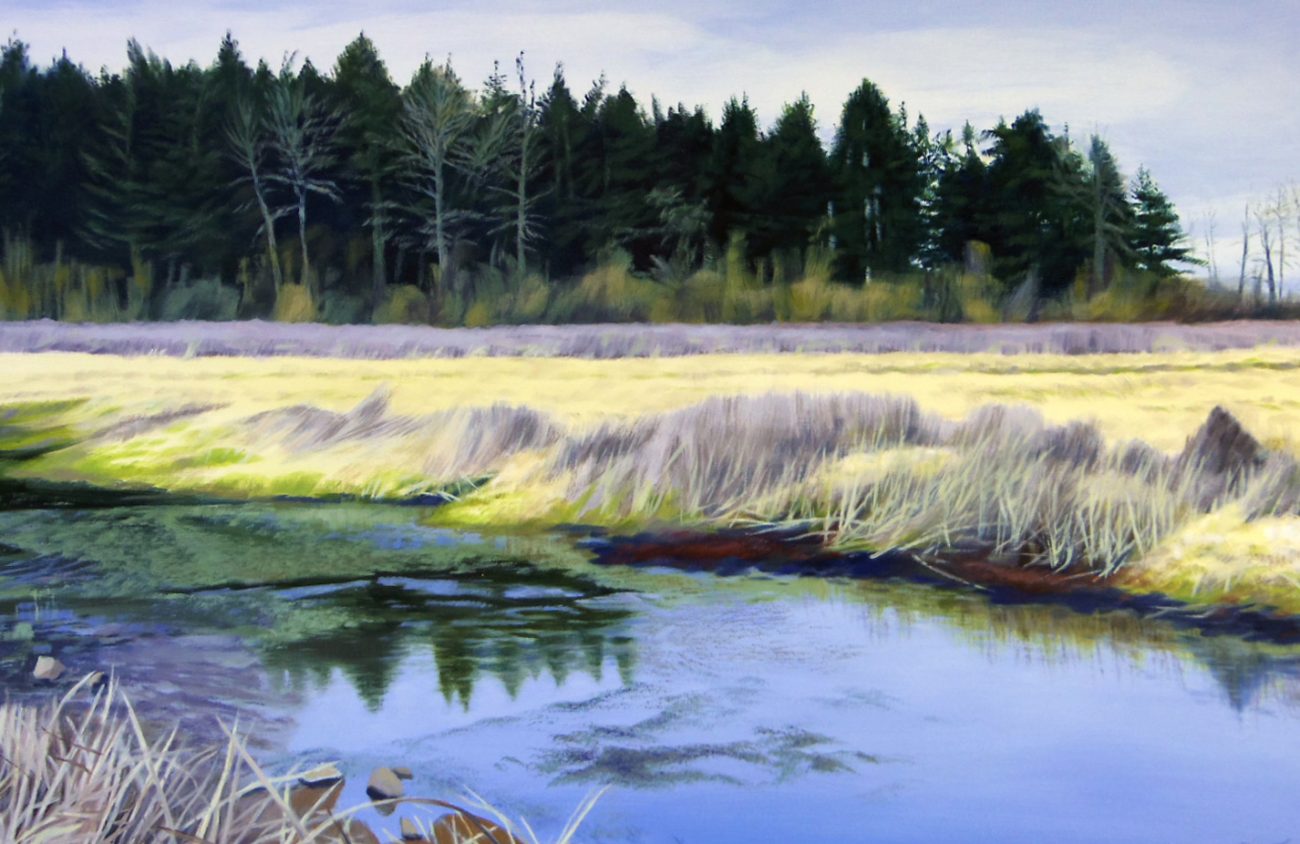Some people look forward to retirement. They plan for the time when they can stop working and do nothing but take it easy and relax.
Artists aren’t usually among those people. Take Picasso, for example: He lived to 91 and famously worked through his later years. Or consider Georgia O’Keeffe, who lived to be almost 100 years old. When her eyesight failed, she switched from painting to sculpture so she could keep working.
Artists want to keep on making art.
This holds true for Margaret Prentice. Not only is she still making art after having retired from her job as art professor at the University of Oregon, she is doing something new.
Prentice was a printmaker during her days as an art professor. She worked in an abstract style and from her imagination. It wasn’t until after she retired that she began to paint what she saw in life. At first she worked small, painting still lifes just to amuse herself.
It was when she switched to a larger format that she got serious about painting.
Prentice’s landscape oil paintings, which you can see in a new exhibit at White Lotus Gallery downtown, are inspired by the outdoors, but she prefers to work inside. Plein air artists traditionally work small so they might have time to finish an entire painting in one day while working outside. Prentice, whose paintings in this show are larger, compares plein air painting to a sport where timing is crucial — as are making quick decisions and moving to the right spot.
She doesn’t want to make snap decisions. Prentice says she likes to take her time walking through a place she’s visited in nature, keeping a lookout for compositions, taking photographs and then going back to her studio to decide which view she wants to paint, and how.
Because her landscape paintings feature water as a subject, you may be tempted to compare them to the work of the late 19th- and early 20th-century Impressionists. Prentice does lay down some of her subject with identifiable brushstrokes, as did the Impressionists, but she doesn’t want to distract the viewer with paint so thick it would remind us that we are looking at a painting. As often as not, she blends her strokes. Her goal is to create the atmosphere of a place and to draw you in.
Composition plays an important part in that effort. For example, her painting West Side of Fern Ridge is a landscape composed of triangles vertically stacked. The triangular design takes you into the space and moves you through grass, water, field, trees and the sky.
Winters in Eugene aren’t brutal — not the way they are back east or in other parts of the country. But in my experience, it does rain nearly every day here during winter. So as it gets closer to spring, and the breaks in weather become more frequent, you see people hurry out to garden or golf, walk or run (well, rain doesn’t always stop most from running in Eugene).
There’s a certain excitement in the air that accompanies a change in weather. It’s that excitement which Prentice aims to convey with her landscape paintings. She’d like us to feel the change in atmosphere that comes with different seasons.
She started painting the majority of the work that’s up at White Lotus Gallery this past summer. Walking around the gallery looking at the different landscapes, moving through the seasons, you may recognize some of the places represented. They are mostly paintings of wetland areas in and around Eugene: Delta Ponds, in town; the Finley National Wildlife Refuge, near Corvallis; and the Fern Ridge Wildlife Area, just west of Eugene.
Would Prentice want every day in Eugene to be sunny? Not really, she says. She enjoys painting stormy days in winter as well as summer days with blue skies.
“There are beautiful things about a gray day, too,” Prentice says.
